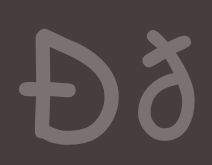Unicode
Unicode is an industry standard for making large numbers of obscure characters displayable on computer screens without the need for inline pictures. It is the intended replacement for ASCII, the industry's first mistake. There is an uncountable number of characters one can type in Unicode, stretching across too many different scripts, languages and dialects. The Unicode Consortium is responsible for maintaining and promoting the standard, annoying operating system programmers until they finally agree to build in support for it.
History[edit]
Since the dawn of computers, ASCII has been the preferred method for typing text into a computer. ASCII contains the English alphabet, the digits 0 through 9, and several punctuation marks needed to format Uncyclopedia articles and type stand-ins for swear words.
With the advent of the Internet however, many other countries also wanted to connect and communicate in their own languages, and not just the one true language of English. Then mathematicians also wanted to type their symbols on the same line as other text, because they couldn't be bothered to learn LaTeX. Finally, the invention of smartphones and instant messaging also led to a desire to enter hieroglyphics into regular text, especially the symbol 💩 (U+1F4A9).
The Unicode Consortium was founded in 1991 to address all of these fundamental shortcomings with the ASCII system. Since then, Unicode has been rapidly adopted, with up to 2% of the world's systems now capable of displaying Unicode.
Architecture[edit]
8 bits can encode any character under the traditional ASCII scheme, giving a wide range of over 256 possible combinations. This should have been more than enough for anybody to create a usable system with, but the powers that be apparently decided otherwise. Now under Unicode, many more bits can be used to encode a single character, giving over a bajillion possible symbols. In fact, the number of possible combinations provided by Unicode is so vast, that every single particle in the Universe can be denoted as its own unique Unicode character. This is why the elements listed on the periodic table are said to have chemical symbols, because the old ASCII letters are deprecated.
There are many categories of Unicode characters to help keep things organized. There are control characters, format characters, assigned characters, abstract characters, special characters, characteristic characters, and movie characters.
Versions[edit]
There are many versions of the Unicode standard, with one new version released alongside each new version of Microsoft Windows. They share the same version numbers, as well. The current Unicode version is 7.0, released with Windows 7; this replaced Unicode version Vista. Windows 8 was a commercial failure, meaning Unicode 8 was never adopted. The next version of Unicode will be version 10 instead of 9, owing to the huge number of characters which will be added for Pig Latin and Klingon.
Standardized subsets[edit]
The huge size of Unicode means that nobody is realistically expected to know/support it all. Thus, just a few key parts of the standard are actually applicable in any situation. Some of the more important ones include Basic Latin, Latin-1 Supplement, Dietary Supplement, Latin Extended-A, Latin Expanded-Dong, IPA Extensions, Spacing Modifiers, Greek, Cyrillic script, Latin Extended-Again, Punctuation, Superscripts, Subscripts, Extra Scripts, Currency Symbols, Arrows Pointing Up, Arrows Pointing Right, Arrows Pointing Left, Arrows Pointing Down, Arrows That Blot Out the Sun, Latin Extended-Yet-Again, Mathematical Operators, Box Drawing, Block Elements, Geometric Shapes, 3D Shapes, Miscellaneous Stuff We Couldn't Fit Anywhere Else, Private Use Area, The Actual Alphabet, Latin Extended-Too-Many-Times, and Specials. By keeping this short list in mind, a developer can cover almost any use case, excluding the other 99.5% covered by all the other subsets.
Typing in Unicode[edit]
Typing specific Unicode letters, even when not present on the user's keyboard, is very easy. The Unicode Consortium recommends using this standard procedure:
- Go to Google.
- Type in the name of your symbol.
- Copy the symbol from the results page without clicking any links.
- Paste your symbol back where you need it.
- Repeat for each and every symbol in your document for full standards compliance.

